Steph Post's Blog, page 22
April 18, 2017
Sunlit!
Lots happening with the St. Pete Sunlit Festival this month! If you're a local and want to stop by to say hi, I'll be at the MFA on Thursday, participating in the Literary Carousel and at the St. Petersburg Main Library this Saturday as part of the "Writers, Winners and the Publishing World" event. Hope to see you there!
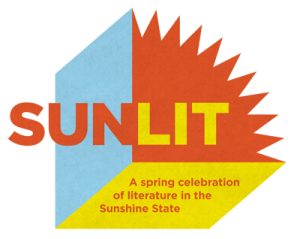

Published on April 18, 2017 18:25
13 Ways to Support an Author
Today, I'm over at LitReactor giving advice on how to support your favorite authors on the cheap. Some of these only take 10 seconds, and all are free, but they honestly mean so much to an author. Take a look!
 Thirteen Ways to Support an Author Without Spending a Dime
Thirteen Ways to Support an Author Without Spending a Dime
 Thirteen Ways to Support an Author Without Spending a Dime
Thirteen Ways to Support an Author Without Spending a Dime
Published on April 18, 2017 14:21
April 13, 2017
Into the Infinite: A Conversation with Nicholas Mainieri
Today I'm sitting down with Nicholas Mainieri, author of the literary thriller The Infinite. As it will soon become obvious to you, Mainieri is a master craftsman when it comes to story and language and I'm grateful of the opportunity to pick his brain on topics such as setting, revision and style. And, as an added bonus, Mainieri was kind enough to share the books he is most looking forward to this year. Read on!
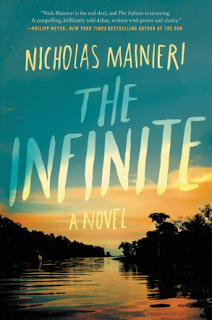
Steph Post: The settings of New Orleans and Mexico are conspicuous and vivid in The Infinite. In the way that they contributed to the novel, I felt that they were almost characters themselves. How important were these two settings to your story and, in general, what is the significance of place- especially real places- in a work of fiction?
Nicholas Mainieri: Setting is one the most important aspects of good fiction, regardless of whether that particular setting is a real place or not. A purposefully described setting establishes mood, echoes character’s emotions, and makes things like extraordinary acts of violence or goodness seem plausible. Actions are woven out of the fabric of setting. When that setting is a real place then things like the moment in time, the specifics of a local culture matter as well. It can be a fine dance between making a certain place “accessible” and being too esoteric. I think New Orleans and Mexico are kind of natural bedfellows. Complicated, beautiful places. I frequently return to the author Jorge Hernández’s phrase regarding Mexico as a place of “enduring contrasts,” and I believe that applies to New Orleans as well. Divides between rich and poor, life and death, play and work, good and bad seem both more pronounced and somehow more blurred. The great themes of literature live and breath. Specifically, these settings were logical bookends to a story that is in part about the cyclical journeys of things like drugs and cash but also people.
SP: I’m also curious about what drew you to the setting of New Orleans, and specifically post-Katrina New Orleans. Did The Infinite need to be set in a city still reeling and rebuilding from the effects of a catastrophe?
NM: I think of The Infinite as a sort of post-post-Katrina story. It’s set in the spring of 2010, a time that seemed to me then as a transitionary period, a complicated slide out of reconstruction and into new development or redefinition. When the rebuilding work was drying up, when the school system was undergoing the final moments of an extensive overhaul, and so on. I was interested in thinking about those who are going to bear the illest effects of massive social change—the young, the poor, the immigrant. And certainly I was thinking about my home, this city I love, that had been rebuilt by immigrants even as our public discourse increasingly vilified them.
SP: The Infinite is a lyrical novel that clearly utilizes your deftness with language. Oftentimes, language and story can be at odds with one another, as one element is sacrificed for another. This seems to occur in both literary and genre fiction, but I didn’t see that struggle in The Infinite. How can you make “poetic” language best serve, and not interfere with, the story?
NM: Well, thanks, Steph. Language is often where I have the most fun with a story, and I believe that one element does not always need to be sacrificed for the other. They can serve each other—the writing can be artful and the story can move. Doesn’t mean that it always works out. Some folks, mainly a few former teachers, would still tell me I’m too precious with language, and there’s some truth to that. Bringing these things into harmony has to come in revision, the continued rewriting, polishing, trimming, culling. I let it flex as best I can on that first draft, then don’t let anybody see it. One thing I ask myself, when considering a particular word choice or syntactical shape or whatever, is whether this particular arrangement of language is doing more than one thing—is it just pretty? If so, then it’s got to go or be rewritten. But if I can justify that it’s doing something in addition to being pretty (like complicating character, echoing emotional truth, advancing plot, resonating with theme) then I work to hone it best I can.
SP: One of the things I loved about The Infinite is that it’s clearly a literary novel, but one with grit under its nails. Did you ever encounter problems with either writing or selling a novel that balks somewhat at the “literary style?”
NM: I was ready to encounter it, sort of expecting it. The books I like the most are those literary novels with grit under their nails. I know I’m not alone in that, and I was just trying to write a story I’d like to read, myself. I got super lucky as this book found the perfect agent and editor for it—I never had to explain anything along these lines. From the get-go, they both saw it as a serious work of fiction first and foremost.
SP: The Infinite is an adult novel, but the two main characters are teenagers. Was it difficult for you to get inside the heads of Jonah and Luz? As a high school teacher, I’m around teenagers every day and the rollercoaster of emotions is staggering. Did portraying Jonah and Luz come easily to you or was it something you struggled with?
NM: I think the adolescent rollercoaster of emotions is a thing we’ve all been through. It’s a true thing. I imagine that most writers have the realities of those days tucked away in their little mental folders of material. What was more challenging, perhaps, was portraying young people who aren’t just contending with those things, but also the profound realities of poverty and death and violence and true hopelessness. I thought to myself that Luz and Jonah are two people who would have grown up quickly. I wanted them to be able to meet their challenges thoughtfully and determinedly. They are “teenagers” technically, but I never thought of them in that way. The first time somebody at my publisher referred to them as teenagers it kind of surprised me, believe it or not, but it is of course undeniable. However, they’re dealing with and handling things that a lot of “adults” will never have to.
SP: And finally, just from your writing style alone, I’m guessing that you have pretty good taste in books…. What upcoming novels are you looking forward to this year? Who should I have on my radar?
NM: I recently read advanced copies of a couple really great books coming out this year. The Boat Runner, by Devin Murphy, is an exceptional epic of WWII and refugees—it crushed me, in the best sense. In the Valley of the Sun, by Andy Davidson, is an artfully written and very scary story, like Barry Hannah meets Stephen King. I’m also looking forward to Lidia Yuknavitch’s The Book of Joan (sci-fi Joan of Arc! From one of the coolest writers working today). The great Percival Everett has a new one coming out, So Much Blue. I don’t know much about it, but he wrote it, so I’ll read it, excitedly. And will this be the year that Cormac McCarthy’s The Passenger hits shelves? I will drop everything.

Me too! Thanks so much to Nicholas Mainieri for stopping by. The Inifinte is now available and you should definitely pick up a copy. Happy Reading!

Steph Post: The settings of New Orleans and Mexico are conspicuous and vivid in The Infinite. In the way that they contributed to the novel, I felt that they were almost characters themselves. How important were these two settings to your story and, in general, what is the significance of place- especially real places- in a work of fiction?
Nicholas Mainieri: Setting is one the most important aspects of good fiction, regardless of whether that particular setting is a real place or not. A purposefully described setting establishes mood, echoes character’s emotions, and makes things like extraordinary acts of violence or goodness seem plausible. Actions are woven out of the fabric of setting. When that setting is a real place then things like the moment in time, the specifics of a local culture matter as well. It can be a fine dance between making a certain place “accessible” and being too esoteric. I think New Orleans and Mexico are kind of natural bedfellows. Complicated, beautiful places. I frequently return to the author Jorge Hernández’s phrase regarding Mexico as a place of “enduring contrasts,” and I believe that applies to New Orleans as well. Divides between rich and poor, life and death, play and work, good and bad seem both more pronounced and somehow more blurred. The great themes of literature live and breath. Specifically, these settings were logical bookends to a story that is in part about the cyclical journeys of things like drugs and cash but also people.
SP: I’m also curious about what drew you to the setting of New Orleans, and specifically post-Katrina New Orleans. Did The Infinite need to be set in a city still reeling and rebuilding from the effects of a catastrophe?
NM: I think of The Infinite as a sort of post-post-Katrina story. It’s set in the spring of 2010, a time that seemed to me then as a transitionary period, a complicated slide out of reconstruction and into new development or redefinition. When the rebuilding work was drying up, when the school system was undergoing the final moments of an extensive overhaul, and so on. I was interested in thinking about those who are going to bear the illest effects of massive social change—the young, the poor, the immigrant. And certainly I was thinking about my home, this city I love, that had been rebuilt by immigrants even as our public discourse increasingly vilified them.
SP: The Infinite is a lyrical novel that clearly utilizes your deftness with language. Oftentimes, language and story can be at odds with one another, as one element is sacrificed for another. This seems to occur in both literary and genre fiction, but I didn’t see that struggle in The Infinite. How can you make “poetic” language best serve, and not interfere with, the story?
NM: Well, thanks, Steph. Language is often where I have the most fun with a story, and I believe that one element does not always need to be sacrificed for the other. They can serve each other—the writing can be artful and the story can move. Doesn’t mean that it always works out. Some folks, mainly a few former teachers, would still tell me I’m too precious with language, and there’s some truth to that. Bringing these things into harmony has to come in revision, the continued rewriting, polishing, trimming, culling. I let it flex as best I can on that first draft, then don’t let anybody see it. One thing I ask myself, when considering a particular word choice or syntactical shape or whatever, is whether this particular arrangement of language is doing more than one thing—is it just pretty? If so, then it’s got to go or be rewritten. But if I can justify that it’s doing something in addition to being pretty (like complicating character, echoing emotional truth, advancing plot, resonating with theme) then I work to hone it best I can.
SP: One of the things I loved about The Infinite is that it’s clearly a literary novel, but one with grit under its nails. Did you ever encounter problems with either writing or selling a novel that balks somewhat at the “literary style?”
NM: I was ready to encounter it, sort of expecting it. The books I like the most are those literary novels with grit under their nails. I know I’m not alone in that, and I was just trying to write a story I’d like to read, myself. I got super lucky as this book found the perfect agent and editor for it—I never had to explain anything along these lines. From the get-go, they both saw it as a serious work of fiction first and foremost.
SP: The Infinite is an adult novel, but the two main characters are teenagers. Was it difficult for you to get inside the heads of Jonah and Luz? As a high school teacher, I’m around teenagers every day and the rollercoaster of emotions is staggering. Did portraying Jonah and Luz come easily to you or was it something you struggled with?
NM: I think the adolescent rollercoaster of emotions is a thing we’ve all been through. It’s a true thing. I imagine that most writers have the realities of those days tucked away in their little mental folders of material. What was more challenging, perhaps, was portraying young people who aren’t just contending with those things, but also the profound realities of poverty and death and violence and true hopelessness. I thought to myself that Luz and Jonah are two people who would have grown up quickly. I wanted them to be able to meet their challenges thoughtfully and determinedly. They are “teenagers” technically, but I never thought of them in that way. The first time somebody at my publisher referred to them as teenagers it kind of surprised me, believe it or not, but it is of course undeniable. However, they’re dealing with and handling things that a lot of “adults” will never have to.
SP: And finally, just from your writing style alone, I’m guessing that you have pretty good taste in books…. What upcoming novels are you looking forward to this year? Who should I have on my radar?
NM: I recently read advanced copies of a couple really great books coming out this year. The Boat Runner, by Devin Murphy, is an exceptional epic of WWII and refugees—it crushed me, in the best sense. In the Valley of the Sun, by Andy Davidson, is an artfully written and very scary story, like Barry Hannah meets Stephen King. I’m also looking forward to Lidia Yuknavitch’s The Book of Joan (sci-fi Joan of Arc! From one of the coolest writers working today). The great Percival Everett has a new one coming out, So Much Blue. I don’t know much about it, but he wrote it, so I’ll read it, excitedly. And will this be the year that Cormac McCarthy’s The Passenger hits shelves? I will drop everything.

Me too! Thanks so much to Nicholas Mainieri for stopping by. The Inifinte is now available and you should definitely pick up a copy. Happy Reading!
Published on April 13, 2017 11:06
April 8, 2017
Writers Read
Check out my book recommendations over at Writers Read today!
Here's a hint of what I'm recommending....

Here's a hint of what I'm recommending....

Published on April 08, 2017 14:41
April 7, 2017
Sunlit Festival
It's April now and that means its time for the St. Pete Sunlit Festival! Literary events of all shapes and sizes will be happening around the city and I'm proud to be participating in two:
April 20- The Literary Carousel at the MFA (short stories inspired by archival photos)
April 21- Writers, Winners and the Publishing World (I'll be reading from and talking about Lightwood)
Hope to see you there!
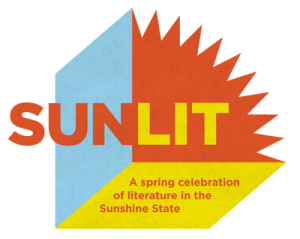
April 20- The Literary Carousel at the MFA (short stories inspired by archival photos)
April 21- Writers, Winners and the Publishing World (I'll be reading from and talking about Lightwood)
Hope to see you there!

Published on April 07, 2017 14:35
April 6, 2017
March 28, 2017
Thoughtful Dog Interview
Today I'm hanging out over at The Thoughtful Dog magazine, discussing gritty writing, the importance of place and why more women aren't writing in Lightwood's genre. Read on!


Published on March 28, 2017 15:02
March 24, 2017
Surviving A Book Tour
My "Book Tour Author Survival Guide" is now live over at LitReactor. This post is close to my heart- my own book tour for Lightwood was a roller coaster whirlwind of events and emotions and I wanted to share what I learned with other authors. I hope that these tips can be of some help or at least let others know that it's okay not to be perfect....


Published on March 24, 2017 08:33
March 23, 2017
A Zoologist Turned Crime Poet: Erica Wright
Today I bring you an interview with Erica Wright, author of
The Red Chameleon
and, more recently,
The Granite Moth
. Wright's crime novels have been on my radar for a while and I'm glad they finally caught up with me!
Also, if you're heading up to the Virginia Festival of the Book this week, be sure to catch Wright on one of her three panels as she balances discussions on her dual specialties: crime writing and poetry.
 Steph Post: I'm going to go ahead and start with the obvious- the title. The Granite Moth is the second of a series of PI novels featuring Kathleen Stone, a master of disguise. The first book was titled The Red Chameleon and so there's a trend here. Both animals reference Kat's ability to don a new wig and assume a new identity at the blink of an eye, but where did the inspiration come from with using colors and animals? And is this a trend that is going to continue throughout the series?
Steph Post: I'm going to go ahead and start with the obvious- the title. The Granite Moth is the second of a series of PI novels featuring Kathleen Stone, a master of disguise. The first book was titled The Red Chameleon and so there's a trend here. Both animals reference Kat's ability to don a new wig and assume a new identity at the blink of an eye, but where did the inspiration come from with using colors and animals? And is this a trend that is going to continue throughout the series?
Erica Wright: When I was twelve, I wanted to be a zoologist. Then I passed out dissecting a frog and was gently encouraged to consider other careers. I’m still obsessed with animals, though, so the titles were an extension of that interest and a logical fit for a character who prides herself on disguises. I started a newsletter because that seems to be the number one piece of marketing advice for writers, but it’s mostly about critters. Did you know that rats in Mozambique helped clear the country of landmines? Amazing. Yes, this is definitely a trend I can’t escape.
SP: The Granite Moth had been on my radar for a little while and a large part of that was due to the cover. The design here just screams that the story inside will be dazzling. It's sort of disco meets old-school pulp which, honestly, mimics the style of Kathleen Stone and your writing. Did you have a hand in the cover selection?
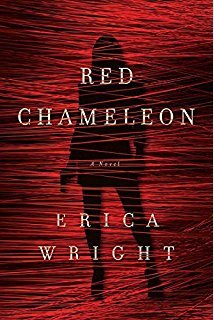
EW: Charles Brock designed the gorgeous cover. I was given a couple of options for The Red Chameleon, but this style was a great fit for the series.
SP: One of my favorite elements of The Granite Moth is the wacky humor that rides alongside the hardboiled storyline. Part of this is due to the plot- the story opens with Kat watching a larger-than-life drag queen float in the middle of a Halloween parade- but much of it comes from the protagonist herself. Kathleen Stone is serious about her job, but also has a wry wit that made this character refreshing in a sea of gritty, hard-nosed private eyes. Where did Kat's voice come from? I'd imagine she's a helluva lot of fun to write.
EW: I was reading a personal essay by Oliver Sacks who had face blindness, a disorder which makes it difficult to recognize faces, sometimes even of people you know well. I wondered if there could be a related phenomena—someone whose face isn’t very memorable or that seems to change depending on the situation. Not exactly a glamorous superpower, but one that Kat has embraced. Some of her humor comes from this reality. She could feel sorry for herself; after all, she’s a young woman who sees the same fashion magazine covers as everyone else. Or she could take advantage of her unique ability to disappear in a crowd. In some ways, this quirk is a stand-in for how she grapples with questions of identify after being undercover for two years. She’s not quite as forgettable as she likes to believe, and yeah, she’s such fun to write. I look forward to spending time with her.
SP: I haven't yet read the first novel in the series, but I felt that The Granite Moth clearly stood on its own. Is it difficult to write successive books in a series, knowing that the reader may not have read about the origins of the character?
EW: It’s easier in the sense that I know the characters better than I did at first. While they still surprise me at times, they also act in ways I understand. I realize that this might sound crazy to non-writers, but after you spend years with fictional people, they don’t seem so fictional anymore. But I definitely needed help from my editor, the brilliant Maia Larson, to show me where more backstory or explanation was required. I always want to be fair to my readers.
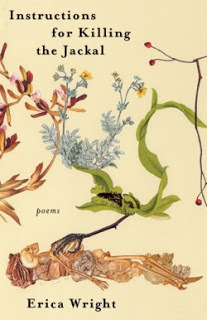
SP: In addition to writing crime novels, you are also an accomplished poet. I was surprised, but thrilled to hear this as I love it when I discover a writer who can play across the board. And Instructions for Killing the Jackal is now high up on my list. Do you find any conflict in your writing life as you straddle these two genres?
EW: I started writing fiction after I finished my first book of poems. That collection took me ten years, and my poetry tank was on empty. Instead of sending the book out and waiting for rejections to roll in (“That way madness lies”!), I started working on a novel. My first attempt was embarrassingly bad, but I still learned a lot from that failure. Now, I rarely write fiction and poetry on the same day, or really, during the same week.
SP: In addition to everything else, you are also a creative writing teacher. What is the best piece of advice or learning moment you ever received from a student?
EW: Oh, I love this question! In the very first session of my very first creative writing class, I was administering an exercise that I hijacked from one of my professors. Basically, I asked a series of unrelated questions, letting students respond to each one. It’s supposed to help with negative capability. Anyway, I was rushing through the questions because I was nervous, and this good-natured group of writers started chuckling and were all like “Take a breath! Slow down!” That was excellent teaching advice, but I apply it to writing as well. It’s not a race, and it’s not a competition. The nice part of this writing business is that there’s plenty of success to go around, which means you can root for others as much as you root for yourself.
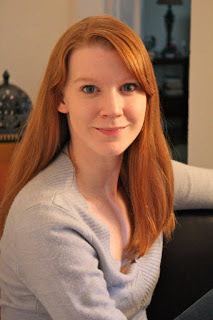
And that, if not anything else, is why I am a new fan of Erica Wright. Be sure to check out both her Kathleen Stone series and her works of poetry. You can also catch her over at Guernica magazine, where she serves as senior poetry editor. Many thanks, Erica!
Also, if you're heading up to the Virginia Festival of the Book this week, be sure to catch Wright on one of her three panels as she balances discussions on her dual specialties: crime writing and poetry.
 Steph Post: I'm going to go ahead and start with the obvious- the title. The Granite Moth is the second of a series of PI novels featuring Kathleen Stone, a master of disguise. The first book was titled The Red Chameleon and so there's a trend here. Both animals reference Kat's ability to don a new wig and assume a new identity at the blink of an eye, but where did the inspiration come from with using colors and animals? And is this a trend that is going to continue throughout the series?
Steph Post: I'm going to go ahead and start with the obvious- the title. The Granite Moth is the second of a series of PI novels featuring Kathleen Stone, a master of disguise. The first book was titled The Red Chameleon and so there's a trend here. Both animals reference Kat's ability to don a new wig and assume a new identity at the blink of an eye, but where did the inspiration come from with using colors and animals? And is this a trend that is going to continue throughout the series?Erica Wright: When I was twelve, I wanted to be a zoologist. Then I passed out dissecting a frog and was gently encouraged to consider other careers. I’m still obsessed with animals, though, so the titles were an extension of that interest and a logical fit for a character who prides herself on disguises. I started a newsletter because that seems to be the number one piece of marketing advice for writers, but it’s mostly about critters. Did you know that rats in Mozambique helped clear the country of landmines? Amazing. Yes, this is definitely a trend I can’t escape.
SP: The Granite Moth had been on my radar for a little while and a large part of that was due to the cover. The design here just screams that the story inside will be dazzling. It's sort of disco meets old-school pulp which, honestly, mimics the style of Kathleen Stone and your writing. Did you have a hand in the cover selection?

EW: Charles Brock designed the gorgeous cover. I was given a couple of options for The Red Chameleon, but this style was a great fit for the series.
SP: One of my favorite elements of The Granite Moth is the wacky humor that rides alongside the hardboiled storyline. Part of this is due to the plot- the story opens with Kat watching a larger-than-life drag queen float in the middle of a Halloween parade- but much of it comes from the protagonist herself. Kathleen Stone is serious about her job, but also has a wry wit that made this character refreshing in a sea of gritty, hard-nosed private eyes. Where did Kat's voice come from? I'd imagine she's a helluva lot of fun to write.
EW: I was reading a personal essay by Oliver Sacks who had face blindness, a disorder which makes it difficult to recognize faces, sometimes even of people you know well. I wondered if there could be a related phenomena—someone whose face isn’t very memorable or that seems to change depending on the situation. Not exactly a glamorous superpower, but one that Kat has embraced. Some of her humor comes from this reality. She could feel sorry for herself; after all, she’s a young woman who sees the same fashion magazine covers as everyone else. Or she could take advantage of her unique ability to disappear in a crowd. In some ways, this quirk is a stand-in for how she grapples with questions of identify after being undercover for two years. She’s not quite as forgettable as she likes to believe, and yeah, she’s such fun to write. I look forward to spending time with her.
SP: I haven't yet read the first novel in the series, but I felt that The Granite Moth clearly stood on its own. Is it difficult to write successive books in a series, knowing that the reader may not have read about the origins of the character?
EW: It’s easier in the sense that I know the characters better than I did at first. While they still surprise me at times, they also act in ways I understand. I realize that this might sound crazy to non-writers, but after you spend years with fictional people, they don’t seem so fictional anymore. But I definitely needed help from my editor, the brilliant Maia Larson, to show me where more backstory or explanation was required. I always want to be fair to my readers.

SP: In addition to writing crime novels, you are also an accomplished poet. I was surprised, but thrilled to hear this as I love it when I discover a writer who can play across the board. And Instructions for Killing the Jackal is now high up on my list. Do you find any conflict in your writing life as you straddle these two genres?
EW: I started writing fiction after I finished my first book of poems. That collection took me ten years, and my poetry tank was on empty. Instead of sending the book out and waiting for rejections to roll in (“That way madness lies”!), I started working on a novel. My first attempt was embarrassingly bad, but I still learned a lot from that failure. Now, I rarely write fiction and poetry on the same day, or really, during the same week.
SP: In addition to everything else, you are also a creative writing teacher. What is the best piece of advice or learning moment you ever received from a student?
EW: Oh, I love this question! In the very first session of my very first creative writing class, I was administering an exercise that I hijacked from one of my professors. Basically, I asked a series of unrelated questions, letting students respond to each one. It’s supposed to help with negative capability. Anyway, I was rushing through the questions because I was nervous, and this good-natured group of writers started chuckling and were all like “Take a breath! Slow down!” That was excellent teaching advice, but I apply it to writing as well. It’s not a race, and it’s not a competition. The nice part of this writing business is that there’s plenty of success to go around, which means you can root for others as much as you root for yourself.

And that, if not anything else, is why I am a new fan of Erica Wright. Be sure to check out both her Kathleen Stone series and her works of poetry. You can also catch her over at Guernica magazine, where she serves as senior poetry editor. Many thanks, Erica!
Published on March 23, 2017 06:50
March 16, 2017
L.A. Noir With Attitude: An Interview with Nolan Knight
Today I'm bringing you an interview with L.A. native and neon-noir author Nolan Knight. His recent novel debut,
The Neon Lights Are Veins
, is unlike anything I've read before (and that's saying something!). The novel's story is a fast-paced mystery and caper, dragging the reader through the underbelly of the Los Angeles night, but most impressive is Knight's style: in your face and no-holds-barred.
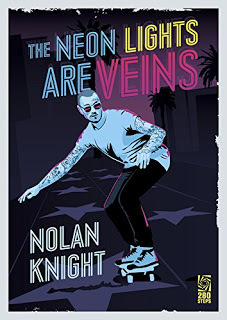 Steph Post: The first word that comes to mind when I think of The Neon Lights Are Veins' style is "kaleidoscopic." There's a lot of color, a lot of flash, a lot of snap. It's a style I have seen in noir before, but it's still rare. How did you develop this unique style and how important was establishing this style to the development of the story?
Steph Post: The first word that comes to mind when I think of The Neon Lights Are Veins' style is "kaleidoscopic." There's a lot of color, a lot of flash, a lot of snap. It's a style I have seen in noir before, but it's still rare. How did you develop this unique style and how important was establishing this style to the development of the story?
Nolan Knight: First off, thanks for having me here, Steph. Referring to the visual aesthetic of the novel, I think that it is less a stylistic choice than just an authentic rendering of nighttime Los Angeles in roughly 2008. When it comes to the actual design of the narrative, that came out of being patient with the process. I started Neon Lights in 2010 and had a shorter draft (similar to what was published) by late-2012. I shelved it, then came back several months later, needing fresh eyes. I think that the time spent fleshing out the vision I had for it is reflected in the end product. Neon Lights became more fluid and dense with each given pass.
SP: In contrast to all the flash, however, The Neon Lights Are Veins also takes place in a world obviously jaded. The first section is aptly titled "Loveless Gutters" and that line in the opening scene- "too bad this world craved dreamers"- sets the tone for a story set among worldly and world-weary characters. Did you ever worry that this story would be too dark for readers?
NK: No. Fortunately, there’s only one reader I worry about when writing anything—and that’s me. The fact that most of my favorite authors’ books developed strong readerships over years/decades, that’s enough for me to believe that other likeminded folks are out there, ones who could possibly be interested in a story like Neon Lights. That’s all that matters.
SP: One of my favorite things about The Neon Lights Are Veins are the characters and their names in particular. Mongo, Elvira, Rocco- the names are fantastic. Where did they come from? Are any of the characters based on real people?
NK: Most of the characters in the novel are based on random people I would come across in my old East Hollywood neighborhood. Drug dealers on skateboards, crust punks busking for beer, etc. As far as names are concerned… I remember when my wife and I were first dating, introducing her to my friends brought something to light: So many of them had odd nicknames that it made it hard for her keep track of everyone. This was something that I had never even considered growing-up in L.A. It got me thinking of how bizarro names had become household in my everyday life. So, when it comes to naming characters, most of the time I find myself taming down versions of what I’d like to call them.
SP: Another defining element of your book is the cracking, whip-smart dialogue and slang-filled prose. From the first sentence, the reader is dropped right in the middle of this world, with no narrative reprieve. It's an immersive reading experience, you might say. Do you write your first drafts in this voice or is this a carefully cultivated style?
NK: This is just the voice that I feel most comfortable with. Anyone can look back at my short fiction catalog and see the footprints. Immersive is a good way to describe Neon Lights. Sink or swim. If I’ve done my job, the story will hook a reader and remove their safety net at the same time. For me, there’s nothing more satisfying than reading a book where I can trust that the writer is in complete control while he/she takes risks with a progressive story.

SP: The city of L.A., particularly it's underbelly scene, really functions as its own character in The Neon Lights Are Veins. How important was this specific setting to the storyline? Could this story have been told in another city?
NK: Los Angeles is a predator in Neon Lights, another antagonist that lures characters with beauty into a doomed existence. When I look at the story overall, I see the main characters as puppets, their strings popping to the fingers of L.A. The City as The Beast was imperative to the text. I’m not sure that it could be told in another city—only for the fact that I don’t know any other cities as well as I know Los Angeles. Born and raised. Thirty-six years. I’m still learning great things about this city every day and plan on growing old with it.
SP: You are clearly a noir writer. In addition to The Neon Lights Are Veins, you've written stories published in Shotgun Honey, Thuglit, Needle and other noir-friendly or centered outlets. What draws you to the noir genre?
NK: When it comes to literary interests, I’m not drawn to any specific genre. If it’s a solid story, I’ll devour it. Most of the shorts I’ve had published definitely have a noir tendency, and Neon Lights is a noir novel; however, the novel I’ve just finished doesn’t read like noir to me, but I bet it will to readers. I think it’s just the setting that I’m drawn to. I like to be out late at night and so do my characters. Not much good happens in Late-Night-Los Angeles, and that’s often the tone reflected in my writing. Call it noir, call it whatever—just have a peek and see for yourself.
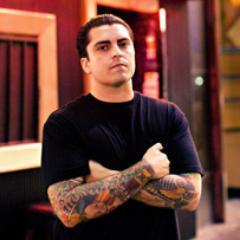
And you'll need to read The Neon Lights Are Veins for yourself. Be sure to pick up a copy and check out the other killer lit coming from indie press 280 Steps. Thanks so much to Nolan Knight for stopping by!
 Steph Post: The first word that comes to mind when I think of The Neon Lights Are Veins' style is "kaleidoscopic." There's a lot of color, a lot of flash, a lot of snap. It's a style I have seen in noir before, but it's still rare. How did you develop this unique style and how important was establishing this style to the development of the story?
Steph Post: The first word that comes to mind when I think of The Neon Lights Are Veins' style is "kaleidoscopic." There's a lot of color, a lot of flash, a lot of snap. It's a style I have seen in noir before, but it's still rare. How did you develop this unique style and how important was establishing this style to the development of the story?Nolan Knight: First off, thanks for having me here, Steph. Referring to the visual aesthetic of the novel, I think that it is less a stylistic choice than just an authentic rendering of nighttime Los Angeles in roughly 2008. When it comes to the actual design of the narrative, that came out of being patient with the process. I started Neon Lights in 2010 and had a shorter draft (similar to what was published) by late-2012. I shelved it, then came back several months later, needing fresh eyes. I think that the time spent fleshing out the vision I had for it is reflected in the end product. Neon Lights became more fluid and dense with each given pass.
SP: In contrast to all the flash, however, The Neon Lights Are Veins also takes place in a world obviously jaded. The first section is aptly titled "Loveless Gutters" and that line in the opening scene- "too bad this world craved dreamers"- sets the tone for a story set among worldly and world-weary characters. Did you ever worry that this story would be too dark for readers?
NK: No. Fortunately, there’s only one reader I worry about when writing anything—and that’s me. The fact that most of my favorite authors’ books developed strong readerships over years/decades, that’s enough for me to believe that other likeminded folks are out there, ones who could possibly be interested in a story like Neon Lights. That’s all that matters.
SP: One of my favorite things about The Neon Lights Are Veins are the characters and their names in particular. Mongo, Elvira, Rocco- the names are fantastic. Where did they come from? Are any of the characters based on real people?
NK: Most of the characters in the novel are based on random people I would come across in my old East Hollywood neighborhood. Drug dealers on skateboards, crust punks busking for beer, etc. As far as names are concerned… I remember when my wife and I were first dating, introducing her to my friends brought something to light: So many of them had odd nicknames that it made it hard for her keep track of everyone. This was something that I had never even considered growing-up in L.A. It got me thinking of how bizarro names had become household in my everyday life. So, when it comes to naming characters, most of the time I find myself taming down versions of what I’d like to call them.
SP: Another defining element of your book is the cracking, whip-smart dialogue and slang-filled prose. From the first sentence, the reader is dropped right in the middle of this world, with no narrative reprieve. It's an immersive reading experience, you might say. Do you write your first drafts in this voice or is this a carefully cultivated style?
NK: This is just the voice that I feel most comfortable with. Anyone can look back at my short fiction catalog and see the footprints. Immersive is a good way to describe Neon Lights. Sink or swim. If I’ve done my job, the story will hook a reader and remove their safety net at the same time. For me, there’s nothing more satisfying than reading a book where I can trust that the writer is in complete control while he/she takes risks with a progressive story.

SP: The city of L.A., particularly it's underbelly scene, really functions as its own character in The Neon Lights Are Veins. How important was this specific setting to the storyline? Could this story have been told in another city?
NK: Los Angeles is a predator in Neon Lights, another antagonist that lures characters with beauty into a doomed existence. When I look at the story overall, I see the main characters as puppets, their strings popping to the fingers of L.A. The City as The Beast was imperative to the text. I’m not sure that it could be told in another city—only for the fact that I don’t know any other cities as well as I know Los Angeles. Born and raised. Thirty-six years. I’m still learning great things about this city every day and plan on growing old with it.
SP: You are clearly a noir writer. In addition to The Neon Lights Are Veins, you've written stories published in Shotgun Honey, Thuglit, Needle and other noir-friendly or centered outlets. What draws you to the noir genre?
NK: When it comes to literary interests, I’m not drawn to any specific genre. If it’s a solid story, I’ll devour it. Most of the shorts I’ve had published definitely have a noir tendency, and Neon Lights is a noir novel; however, the novel I’ve just finished doesn’t read like noir to me, but I bet it will to readers. I think it’s just the setting that I’m drawn to. I like to be out late at night and so do my characters. Not much good happens in Late-Night-Los Angeles, and that’s often the tone reflected in my writing. Call it noir, call it whatever—just have a peek and see for yourself.

And you'll need to read The Neon Lights Are Veins for yourself. Be sure to pick up a copy and check out the other killer lit coming from indie press 280 Steps. Thanks so much to Nolan Knight for stopping by!
Published on March 16, 2017 10:39



